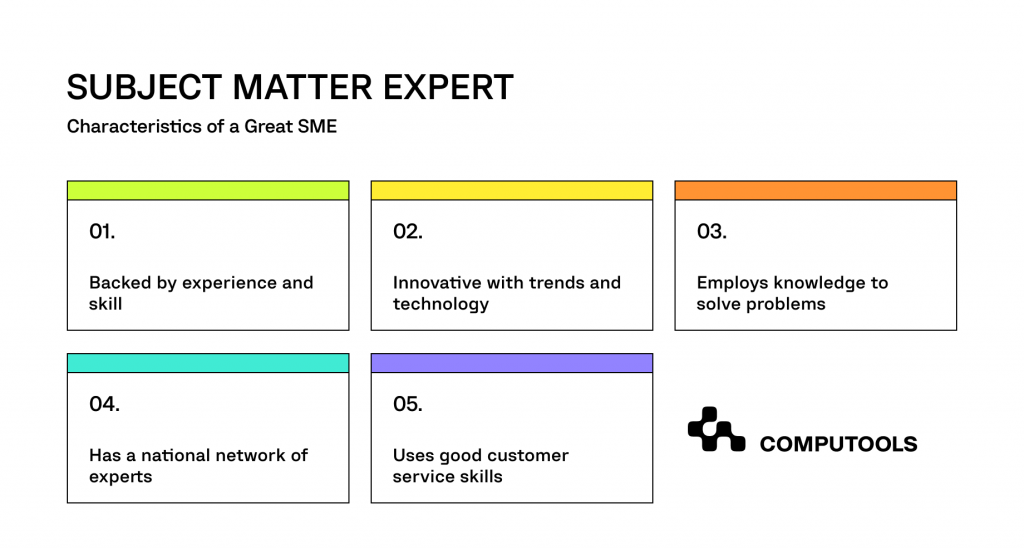Would you take out a loan without consulting with a loan officer and your loved ones first?
Of course you wouldn’t.
You shouldn’t build a product without consulting with your stakeholders and product team, either.
This is why holding a kickoff meeting is so important in product discovery .
It’ll get everyone on the same page about your product and set the stage for the rest of your discovery process.
In this article, we bring you 5 best practices you should follow to make your kickoff meeting successful.
Let’s go!
Choosing the participants in the kickoff meeting is almost as important as the meeting itself.
That’s why you need to identify key stakeholders and assemble the right product discovery team .
Stakeholder is a term that’s used to describe a very broad group of people.
In simple terms, a stakeholder is someone who has a vested interest in your business.
For example, the government and society at large are also stakeholders.
Of course, it doesn’t make much sense to include a government representative in your kickoff meeting.
That’s why you should invite only the most relevant ones , such as:
Senior executives
Subject matter experts
The product team
Your client or their representative
They’ll be able to provide unique insights and help steer your discovery efforts in the right direction.
A senior executive will be able to tell you if your product idea aligns with the business strategy.
Inviting a subject matter expert to the meeting can help you avoid the most common mistakes from the get-go.
source: Computools
It’s a good idea to invite them if you’re entering a new market.
If you’re running an agency, always invite your client or their representative to the kickoff meeting.
However, your product team are the most important stakeholders.
After all, they’re the ones that’ll be building the product.
Your core discovery team should include the product trio
Here at DECODE, we use a similar approach and the key roles in our discovery process are:
If your product is particularly complex, you might need extra designers or engineers to work with your product trio.
Be sure to invite them to the kickoff meeting, too.
Having the right team in place right from the kickoff meeting will increase your product’s chances of success.
The kickoff meeting is the ideal place to set your goals for product discovery.
This is because you’ll have your key stakeholders and your product team all in one place.
Make sure you use their expertise and collectively set the specific goals you want to achieve during product discovery.
Can you build a successful product if you don’t know why you’re building it?
No, of course you can’t. And neither can your team.
App development starts with product discovery…
That’s why it’s so important to set clear goals before you start product discovery.
You should have some goals you want to achieve with your product even before the kickoff meeting.
They’re likely to be vague, though.
Even so, they can be a good starting point for creating more specific goals.
A handy framework you can use is the SMART goals
Using this framework will help your team focus their discovery efforts and build a better product.
But, what exactly goes into setting these goals?
To set meaningful discovery goals, there’s 2 things you need to know.
First, you should know which of your users’ problems your product solves.
You can think of that as the main goal of your product.
This will help you create more specific goals for your product discovery.
The second thing you need to know are the specific outcomes you want to achieve during product discovery.
They might be something like:
You should go backwards from your desired outcomes and create specific goals that help you achieve them.
So, if you want to identify your target audience’s preferences, one specific goal might be “Interview 15 users”.
Defining goals like this during the kickoff meeting will help your team start discovery on the right foot.
The kickoff meeting is the starting point for product discovery.
It’s where you decide how you’re going to approach discovery.
That’s why it’s a good place to adopt a user-centered mindset .
Your product can’t be successful without meeting your users’ needs and they should always be your main focus.
Use the kickoff meeting to emphasize this point to your stakeholders and your team.
This will maximize your product’s chances of success.
So, how can you make that happen?
The first step is emphasizing the importance of empathy
Empathy is the first stage of the design thinking process and also a key element of user-centered design.
source: Interaction Design Foundation
In simple terms, it means that you approach product design from your users’ perspective .
The kickoff meeting is the perfect venue to adopt empathy and a user-centered mindset.
One way you can do that during the meeting is to include a session where you ideate from the user’s point of view.
Think about the reasons why your users would choose to use your product.
Let’s say you’re developing a prototyping tool .
Some questions you might ask during the session are:
How will this product improve my workflow?
Why would I choose this product over the competition?
Does this product solve my problems?
Is it intuitive and easy to use?
Does it offer all the features I need?
These are all questions that your users will ask themselves before deciding whether to use your product.
But, these are still just assumptions.
You’ll need to validate them through user research and testing.
Use the kickoff meeting to emphasize how important user feedback is to creating a successful product.
Outline how you’re going to implement feedback loops continuous user involvement is critically important to its success.
Adopting a user-centered mindset will make your discovery process smoother. It will also help you create a product that meets your users’ needs.
One of the key deliverables you get from the kickoff meeting is the product discovery roadmap .
A well-defined roadmap is essential if you want your discovery to be successful.
It’ll give your team’s discovery efforts structure and focus.
So, what goes into creating an effective roadmap?
The key elements you should include in your roadmap are:
The goals you want to achieve
Key activities
Milestones
The timeline
Here’s an example of what it might look like:
source: Aktia Solutions
The first step to creating the roadmap is defining the phases of your discovery process.
Make sure you include the specific activities , deliverables and milestones for each phase.
Creating the roadmap should be a collaborative activity.
This way, you’ll encourage your team to cooperate from the beginning of the discovery process.
Your product team will know best how much time they’ll need for each activity.
Let them decide between themselves how to best allocate resources and delegate responsibilities.
Learn from a software company founder. Make your software product successful with monthly insights from our own Marko Strizic.
Make sure the roadmap accounts for potential delays, though.
Any number of unexpected risks and challenges might disrupt your original timeline.
Your competitors might launch a range of new features for their product and you’ll have to add new features too.
Another risk you might face is if one of your team members gets sick and you have to onboard another employee.
This is why your discovery roadmap should be flexible rather than set in stone.
Open communication and collaboration are key to the success of any meeting.
The kickoff meeting is no exception.
We’ve mentioned already that it sets the tone for the rest of discovery.
That’s why encouraging open communication and collaboration from the start is so important.
Make sure the meeting is a place of psychological safety for your attendees.
source: TestGorilla
They should feel safe expressing their opinions, ideas, and concerns without worrying about consequences.
That way, they’ll be more likely to share their ideas and lead a fruitful discussion.
You can encourage this by including brainstorming sessions and creative exercises .
You should embrace the diversity of ideas that these activities will bring.
Encouraging diverse ideas often leads to unexpected innovations and breakthroughs.
Someone might approach a problem from an angle you haven’t considered and come up with an unconventional solution.
There’s another reason why open communication and collaboration are important.
It’s because your discovery team is cross-functional.
Your discovery team members will come from different professional backgrounds.
Each of them will have their own approach and might struggle adapting to collaborative work.
The key to managing cross-functional teams are the 3 Cs :
Communication
Collaboration
Coordination
It’s also a good idea to use the kickoff meeting to establish a conflict resolution framework.
Your team should view conflicts as opportunities for growth and learning.
Encourage them to openly discuss their problems to find common ground and come to a consensus.
This’ll improve team dynamics and lead to better decision making during discovery.
A successful kickoff meeting sets the stage for the rest of your product discovery.
It helps all stakeholders get on the same page and clearly communicates why and how you’ll be building your product.
But, to get the most of it, you also need to find the right company to partner with.
Luckily, you’re in the right place.
If you’re interested in learning more, check out our product discovery process and feel free to reach out to us and we’ll see how we can help you.






